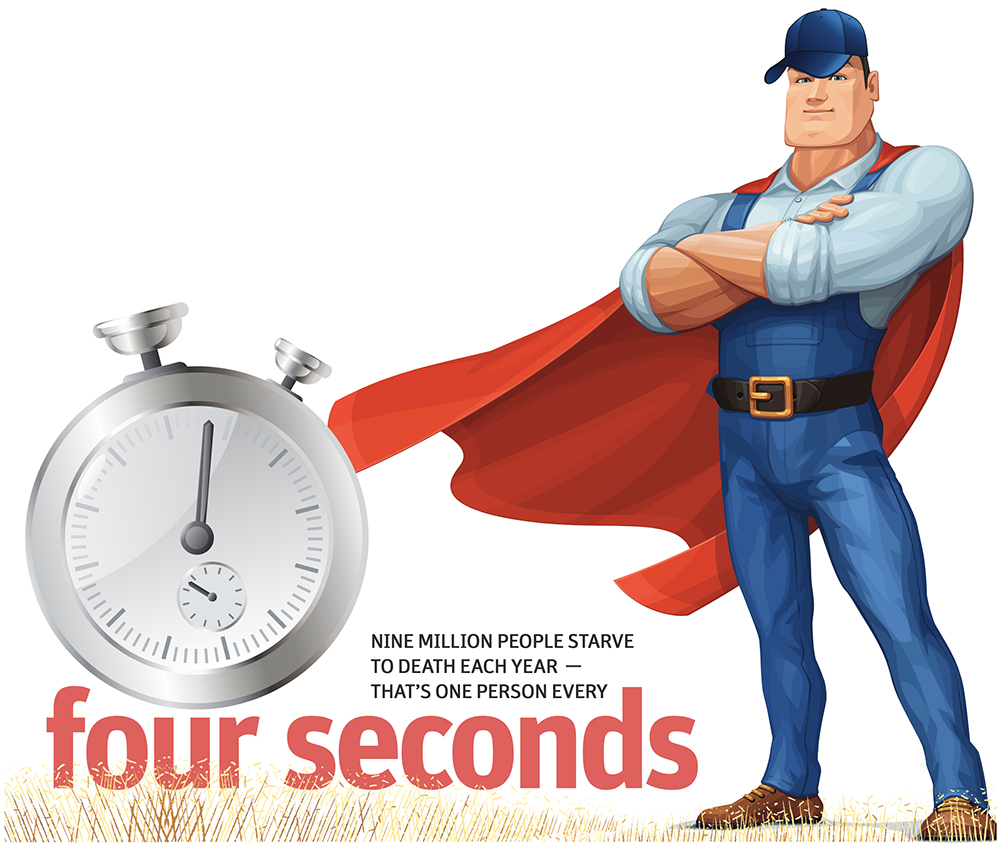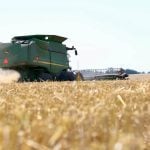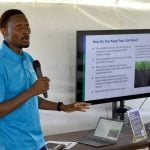For Jack Bobo, agriculture has often been unjustly in the crosshairs of climate conversations, with farmers cast as villains for everything from using advanced crop breeding technology to simply raising livestock.
At a presentation to a GrowCanada conference in Ottawa on Dec. 1, Bobo cited figures from the World Resources Institute that show agriculture is already more than halfway there, 61 percent, when it comes to reaching climate change mitigation goals. Moreover, farmers achieved these remarkable gains on their own.
“Two-thirds of the improvement we need you will do simply because it’s good business, not because anybody’s asking you to do it,” Bobo said. “Instead of trying to tell you what you need to do to fill that gap, we should be thanking you for doing two-thirds of the work and asking you how we can help you do the last third.”
Read Also

Crop profitability looks grim in new outlook
With grain prices depressed, returns per acre are looking dismal on all the major crops with some significantly worse than others.
Bobo is Director of Food and Water Policy with The Nature Conservancy (Nature United). He said in terms of the environment or humanity’s daily survival, nothing is more important than agriculture.
“Forty percent of all the land on earth is currently being devoted to agriculture. The amount of cropland is the size of South America. The amount of pastureland is the size of Africa.”
In the U.S., he said farming uses 70 percent of the fresh water consumed, with consequences such as the Colorado River’s outlet to the Pacific Ocean now reduced to a trickle. Ten to 15 percent of greenhouse gas (GHG) emissions come from agriculture, while another 10 to 15 percent come from deforestation — about 80 percent due to agriculture.
Bobo said these figures don’t show the whole picture. As an example, every dollar invested in wind and solar, the darlings of the environmental conversation, yields less than a dollar in benefits.
“But for every dollar you invest in agriculture, anywhere in the world, you get a positive rate of return — about a $1.43 for every dollar invested.”
Part of this benefit is not easy to see because it comes in the form of damage prevented. For example, Bobo said the world currently has 8.9 billion acres of forest remaining. If farmers were still using 1960s technology, humanity would need to raze 2.5 billion acres of this, more than a quarter of the remaining forests, to achieve current production levels.
“Agriculture is the single biggest driver of deforestation and it is the single biggest protector of forests. Innovation is the reason that a quarter of all forests exist.”
He said decisions made locally can affect forests on the other side of the world. Europe’s Farm to Fork strategy, for example, is pushing farmers to cut pesticide use by half, fertilizer use by 20 percent and to expand organic production by 25 percent. The Europeans acknowledge these measures will cut food production by 15 percent.
“That’s a lot,” Bobo said. “What country sends the most food to Europe? Brazil. Well, if I was going to export my environmental footprint to a country it probably wouldn’t be the most biodiverse country on the planet.”
The point is not to pick on the Europeans but to illustrate that decisions have consequences both local and global and both need to be considered.
The world is facing the triple threats of climate change, environmental degradation and population growth and we have scant time to meet these challenges.
Bobo said about 800 million people on earth go to bed hungry. Nine million die every year from lack of food — that’s one person every four seconds.
This has led to a common refrain that “the food system is broken,” but the temptation to look backward to a time when it was not broken is ignoring progress that has been made. Childhood mortality, for example, is at its lowest level in history.
“Are things really bad and getting worse? Or are they good and getting better — just not fast enough?”
Farmers, just by striving to get better at what they do, have made great progress. Bobo cited USDA figures that show that producing a bushel of corn in 2011 produced 35 percent fewer GHGs than in 1980. That bushel also takes 40 percent less land, uses 40 percent less energy, half the water and causes 60 percent less erosion. He said this is likely true of wheat and canola in Canada; it does hold true for U.S. cotton, soybeans and other crops.
“Things are not just better. They’re dramatically better,” he said. “Things are not bad and getting worse; they’re good and getting better, just not fast enough. And that’s a very important framing of this conversation because it doesn’t say there aren’t problems, it says the direction that we’re moving in many ways is a really good one.”
And these problems are daunting. The world’s population just ticked over on the eight billion mark and this is expected to climb to 9.5 billion by 2050. Bobo said these are not only extra people to feed but people that will demand higher-quality food as they gain affluence.
The good news is farmers have a history of innovation and the tools they need to get over the production hump exist today. They just have to be widely deployed. But there’s another hazard that could prevent this: consumer trust.
Bobo describes himself as a “science optimist and regulatory pessimist” in this regard. He said communication to build public trust is essential, since consumers suspicious of agricultural innovations can push their governments to enact regulations to stymie or stop advances.
He said these are challenges that will make the next 30 years the most important 30 years, ever. But if humanity is successful, he sees a dividend. After 2050, the population will dramatically flatten out as the effect of smaller families worldwide begins to show up.
“If we can get to 2050 without cutting down our forests, without draining our rivers our lakes, our aquifers, we have this huge opportunity,” Bobo said. “For the first time in human history, we won’t need massively more food. All of those productivity gains will go to reducing the footprint of agriculture.
“So, every day between now and 2050, it will get harder to feed the world. But every day after 2050, it will get easier to feed the world. The challenge is to get to 2050 without screwing things up.”















